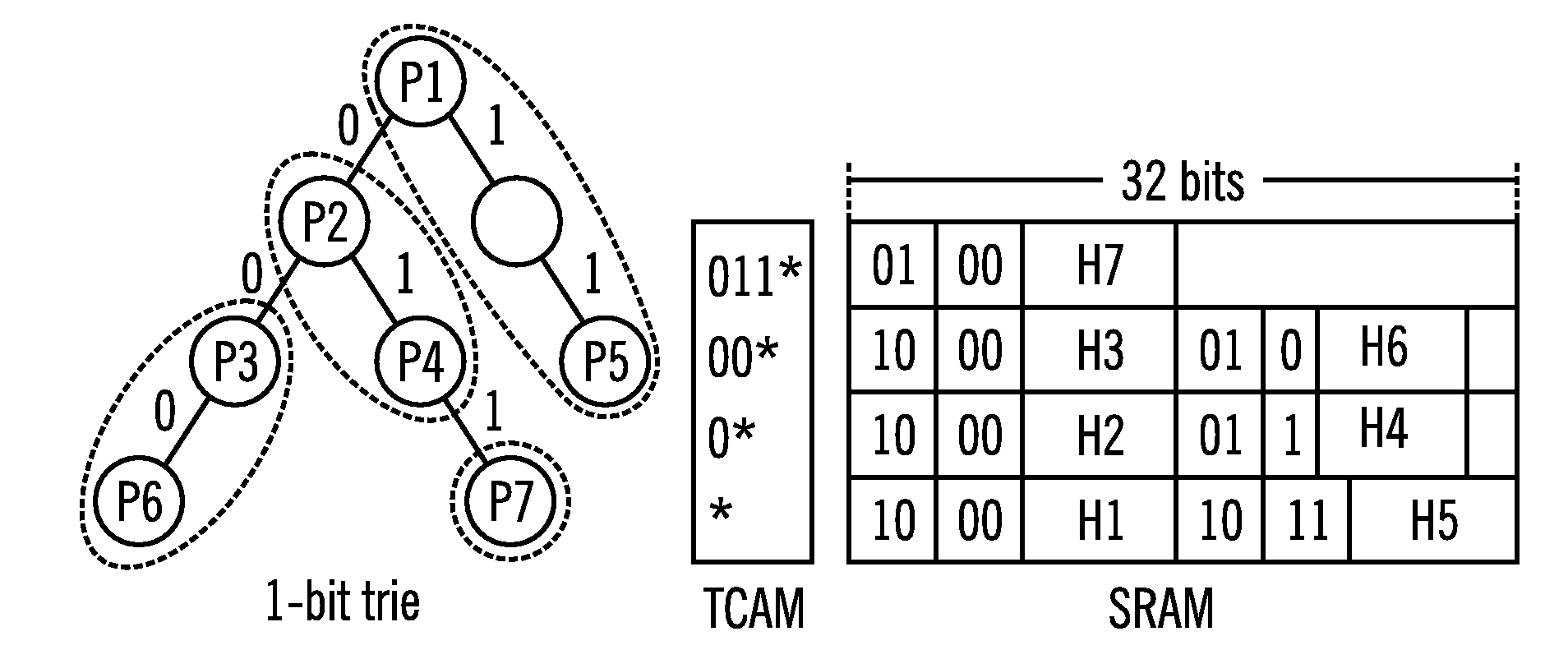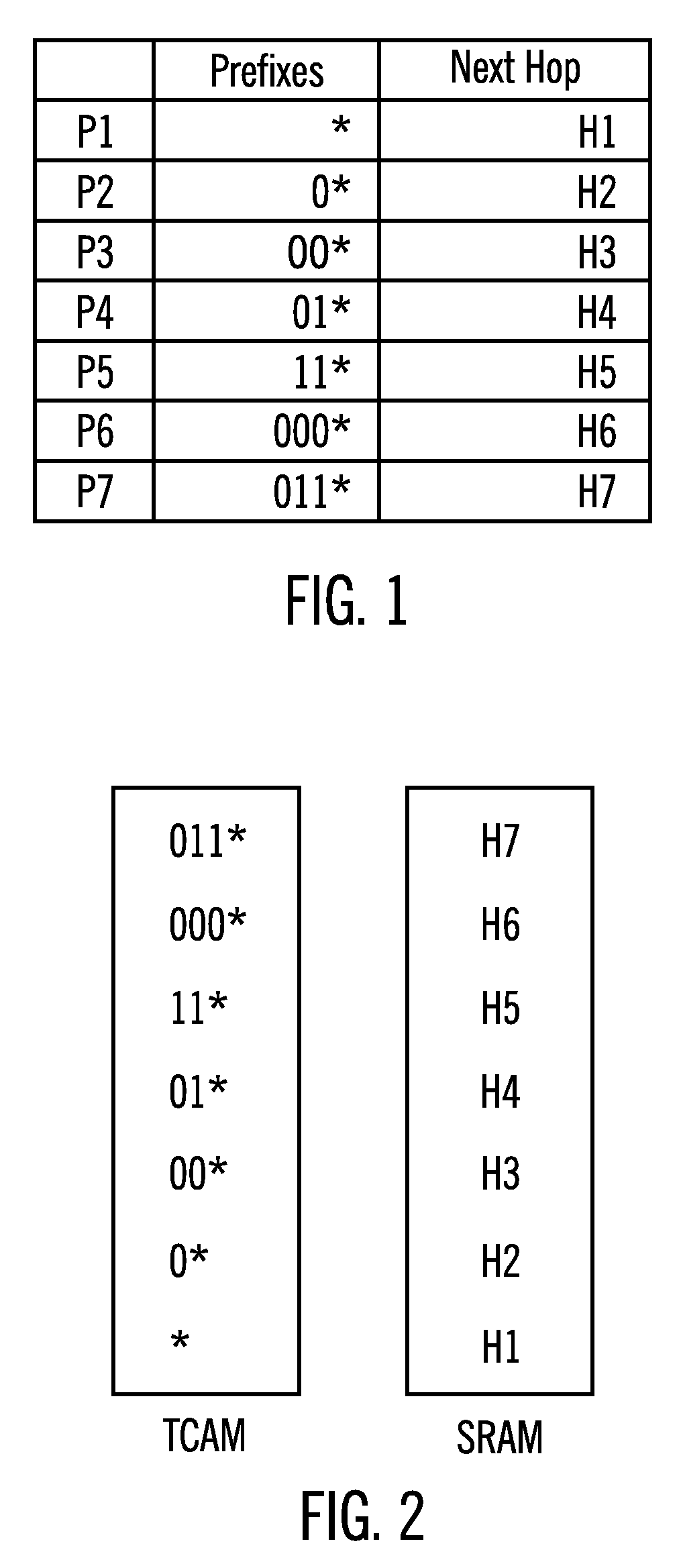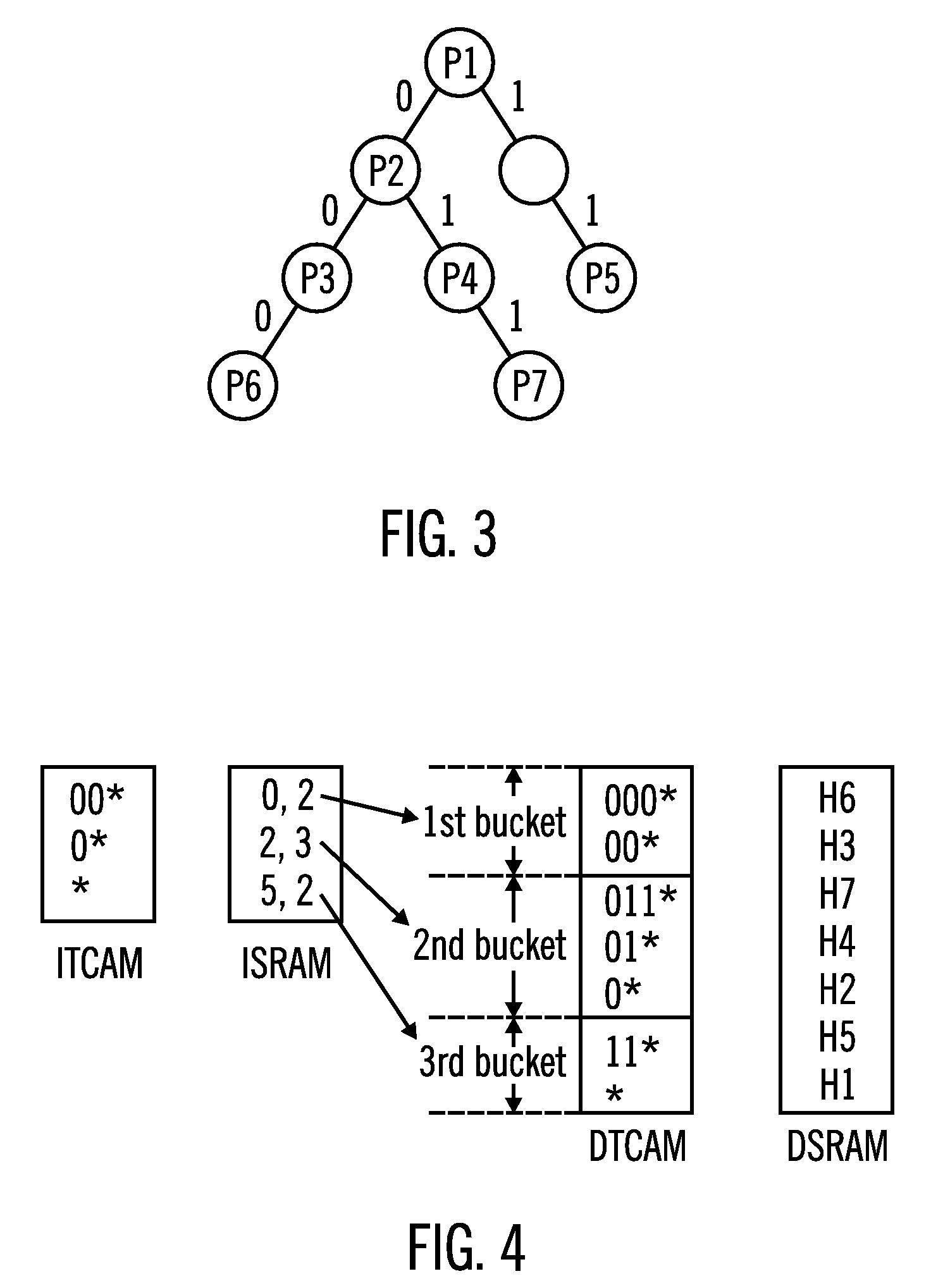Low power ternary content-addressable memory (TCAMs) for very large forwarding tables
a technology of ternary content and forwarding tables, applied in the field of decoding and displaying audiovisual programs, can solve the problems of unimportant cost and limited application of tcams, and achieve the effects of reducing power consumption, simple and fast implementation of router's forwarding engine, and reducing tcam memory
- Summary
- Abstract
- Description
- Claims
- Application Information
AI Technical Summary
Benefits of technology
Problems solved by technology
Method used
Image
Examples
Embodiment Construction
[0051]It should be understood that these embodiments are only examples of the many advantageous uses of the innovative teachings herein. In general, statements made in the specification of the present application do not necessarily limit any of the various claimed inventions. Moreover, some statements may apply to some inventive features but not to others. In general, unless otherwise indicated, singular elements may be in the plural and vice versa with no loss of generality.
[0052]The present invention improves upon the router-table partitioning algorithms of the reference Zane and the reference Halu. These algorithms may be used to partition router tables into fixed size blocks as is required by the architecture of the reference Akhbar as well. Additionally, described is how to couple TCAMs and wide SRAMs so as to search forwarding tables whose size is much larger than the TCAM size with no loss in time and with power reduction. The algorithms and techniques of the present inventio...
PUM
 Login to View More
Login to View More Abstract
Description
Claims
Application Information
 Login to View More
Login to View More - R&D
- Intellectual Property
- Life Sciences
- Materials
- Tech Scout
- Unparalleled Data Quality
- Higher Quality Content
- 60% Fewer Hallucinations
Browse by: Latest US Patents, China's latest patents, Technical Efficacy Thesaurus, Application Domain, Technology Topic, Popular Technical Reports.
© 2025 PatSnap. All rights reserved.Legal|Privacy policy|Modern Slavery Act Transparency Statement|Sitemap|About US| Contact US: help@patsnap.com



